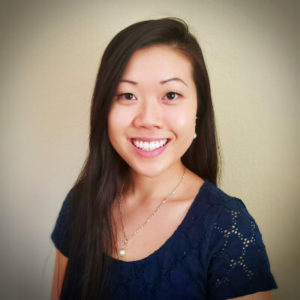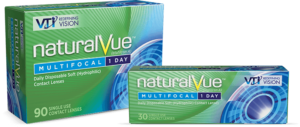

The COVID-19 pandemic raised patients’ understanding of eye fatigue, especially after long hours of computer and near-work. That has opened the door to discussions that Jenny Wong, OD, MSVS, of the Contact Lens Institute of Nevada, in Las Vegas, has with parents of young myopic children. She explains that children today spend more time on digital devices and that their myopia may be progressing faster than the parent’s myopia did.
She also mentions that soft contact lenses – a modality that many parents are comfortable with – are available and can be effective in slowing down the progression of myopia. “I work at a specialty contact lens practice, and many of our younger patients have high myopia. I was looking for options other than orthokeratology, and I find that parents are more familiar with soft contact lenses. So NaturalVue® (etafilcon A) Enhanced Multifocal 1 Day™ contact lenses from Visioneering Technologies Inc. are a great option.”


Dr. Wong says that she and parents particularly like that these are one-day lenses. “The fitting process is easy,” she notes.
When young myopic patients and their parents first come for a consult, she’ll conduct imaging and scans so that she can discuss the prescription, the rates of change so far and the expected rate of change projections. She explains her recommendations and, importantly, the why behind controlling the rate of change.
Patients and parents are scheduled for a time period that allows a comprehensive exam, imaging and consultation. She generally spends about 15 minutes to a half hour reviewing the exam findings, myopia control options, fees and expectation. “It does not need to be a particularly time-consuming consult, especially if the families decide on low-dose atropine or a soft multifocal contact lens option. I think most parents of patients are naturally interested in not wanting their children’s eyes to get worse, so it can be a smooth transition into a discussion of myopia control when reviewing exam findings and plan,” she says.
As part of the discussion on expectations, she reminds patients and parents that the goal is to slow down myopic progression. “High myopes or orthoK patients, for example, may still need some additional distance correction, so it is important to emphasize the focus on managing the progression of myopia.”
Dr. Wong says that having more options is good for families. “Children with good hygiene habits can wear contact lenses, so if I see a big jump from one exam to the next, I’ll recommend an A scan and check other risk factors. I encourage parents that we should start myopia management sooner – and with soft contact lenses, that is easier to do.”
LONG-TERM OUTLOOK
Another point of education is the long-term impact of myopia progression. “I will have parents say that they want their children to get LASIK, but I’ll explain that if the myopia gets too high, they may not be candidates. We should start them on some system of myopia management now so that the outcomes for future interventions may have better chances of success.”
Working with these young patients has been a practice builder, Dr. Wong says. Parents are eager to know if siblings of children undergoing myopia management are showing the same progression, and they talk to other parents of myopic children, too.
WANT TO LEARN MORE?
Visit https://vtivision.com/practitioner/mypath/ to watch videos of leading practitioners who talk about the imperative of myopia management and why parents – and practitioners – should engage early.
Disclaimer: Dr. Wong was compensated for her time in preparing this article.
MKT-NVEM-ALP2 r0



